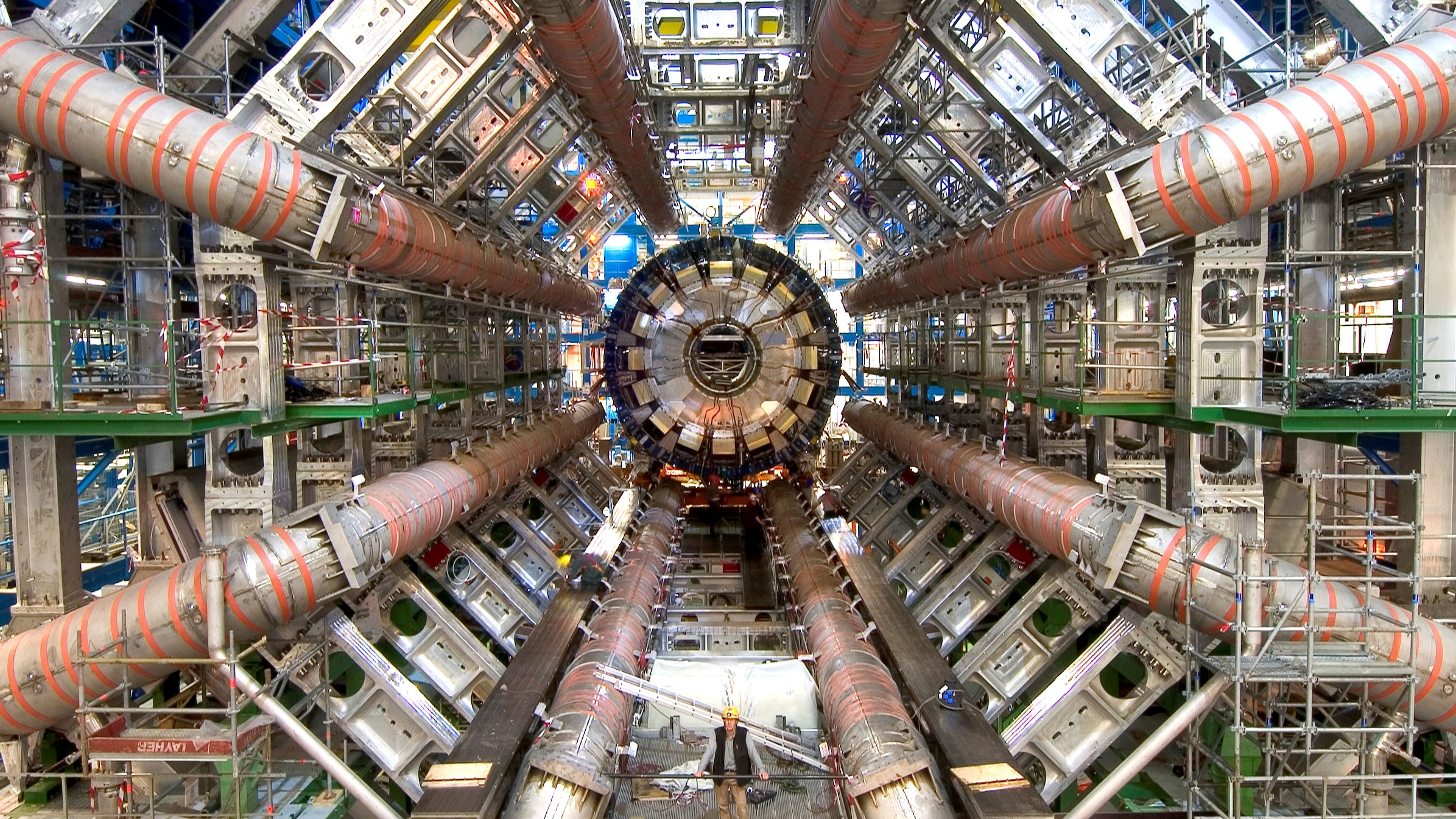CERN: We have observed evidence of a boson particle
God Particle signs spotted in LHC experiment

CERN has officially announced that it has observed evidence of the formerly theoretical Higgs boson particle.
The search for the Higgs boson particle has been one of the key experiments for the Large Hadron Collider, and it appears that the search for the so-called God Particle has been fruitful.
"We observe in our data clear signs of a new particle, at the level of 5 sigma, in the mass region around 126 GeV," said ATLAS experiment spokesperson Fabiola Gianotti.
Huge efforts
"The outstanding performance of the LHC and ATLAS and the huge efforts of many people have brought us to this exciting stage, but a little more time is needed to prepare these results for publication."
There is always a degree of reticence to claim discovery in these circumstances, but the enthusiasm of the community for the initial findings are clear.
"The results are preliminary but the 5 sigma signal at around 125 GeV we're seeing is dramatic. This is indeed a new particle. We know it must be a boson and it's the heaviest boson ever found," said CMS experiment spokesperson Joe Incandela.
"The implications are very significant and it is precisely for this reason that we must be extremely diligent in all of our studies and cross-checks."
Get daily insight, inspiration and deals in your inbox
Sign up for breaking news, reviews, opinion, top tech deals, and more.
"It's hard not to get excited by these results," said CERN Research Director Sergio Bertolucci. "We stated last year that in 2012 we would either find a new Higgs-like particle or exclude the existence of the Standard Model Higgs.
"With all the necessary caution, it looks to me that we are at a branching point: the observation of this new particle indicates the path for the future towards a more detailed understanding of what we're seeing in the data".
But what does it mean?
"In simple language, CMS have discovered a new boson, and it behaves like the Standard Model Higgs," tweeted TV scientist Professor Brian Cox.
The discovery is hugely exciting for physicists as they look to discover the fundamental building blocks of our universe.
"We have reached a milestone in our understanding of nature," said CERN Director General Rolf Heuer.
"The discovery of a particle consistent with the Higgs boson opens the way to more detailed studies, requiring larger statistics, which will pin down the new particle's properties, and is likely to shed light on other mysteries of our universe."
What next?
According to CERN: "The next step will be to determine the precise nature of the particle and its significance for our understanding of the universe."
So the CERN scientists will now look to identify if the boson acts like it expects a Higgs boson to in theory and unlock the mystery of why visible matter only accounts for around four per cent of the universe.
"Are its properties as expected for the long-sought Higgs boson, the final missing ingredient in the Standard Model of particle physics? Or is it something more exotic?" asks CERN.
"The Standard Model describes the fundamental particles from which we, and every visible thing in the universe, are made, and the forces acting between them.
"All the matter that we can see, however, appears to be no more than about 4 per cent of the total. A more exotic version of the Higgs particle could be a bridge to understanding the 96 per cent of the universe that remains obscure."
Patrick Goss is the ex-Editor in Chief of TechRadar. Patrick was a passionate and experienced journalist, and he has been lucky enough to work on some of the finest online properties on the planet, building audiences everywhere and establishing himself at the forefront of digital content. After a long stint as the boss at TechRadar, Patrick has now moved on to a role with Apple, where he is the Managing Editor for the App Store in the UK.
